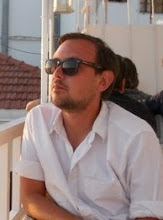
Excerpts from this week's "Now and Then," now up on TOH:
"[The Kids Grow Up] requires an examination of your own life in order to wend your way into it. Anyone who has been part of a family will understand Block’s feeling of being unmoored, acknowledge the impossibility of separating oneself from the narrative. This may be why, in the end, the film seems so much roomier than the mere portrait of a family in transition: it jogs the memory, becoming personal for both subject and spectator. It is strewn with the hard, sweet wisdom that family life is one long improvisation in intimacy, full of compromises and wrong turns. Interviewing his father about the experience of parenting, of living, Block captures it in microcosm: 'We don’t know too much,' the father says. 'We learn as we go along. We learn too late, and even then it’s difficult.'"
"Good fun... can be had during Sherman’s March, which carries the unnecessarily weighty subtitle “A Meditation on the Possibility of Romantic Love in the South During the Era of Nuclear Weapons Proliferation.” But much of the nearly three-hour running time is so slackly paced, so meditative, that the middle 90 minutes might best function as something to keep an eye on while you make soup. There are moments in which even McElwee seems bored. 'Speaking of apple juice,' he asks offhandedly at the one-hour mark, 'is there any bourbon?' I took his advice. I poured myself a drink and read an article about the debt crisis in the Times, and when I came back he was still there, like an old friend who presses on with the story while you grab another bottle of wine."



